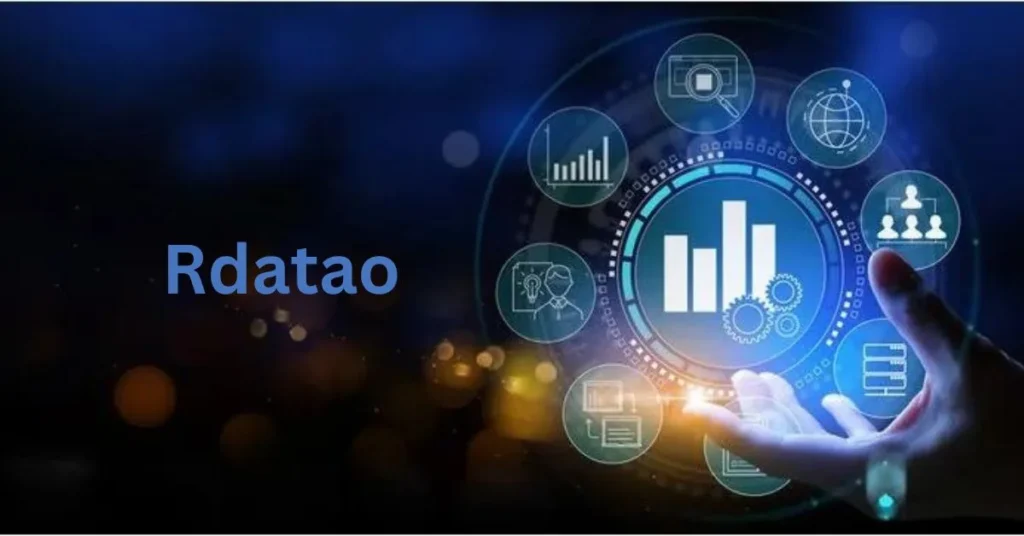Rdatao is designed to handle large datasets and complex analytical tasks with ease. It integrates various statistical and machine learning techniques, enabling users to derive meaningful insights from their data. Known for its user-friendly interface, flexibility, and scalability, Rdatao has quickly become a popular choice among data scientists, analysts, and researchers.
This guide aims to provide a comprehensive understanding of Rdatao, exploring its key features, applications, and its significance in the field of data analytics. By the end of this guide, you will have a thorough grasp of how Rdatao can be utilized to enhance your data analysis processes and drive impactful decisions within your organization.
What is Rdatao?
Rdatao is an advanced data analytics platform designed to handle large datasets and complex analytical tasks. It integrates various statistical and machine learning techniques, enabling users to derive meaningful insights from their data. Rdatao is known for its user-friendly interface, flexibility, and scalability, making it a popular choice among data scientists, analysts, and researchers.
Key Features of Rdatao
Rdatao offers a wide range of features that cater to the diverse needs of data analytics professionals. Some of the key features include:
- Data Integration: Rdatao supports the integration of data from various sources, including databases, spreadsheets, and cloud services.
- Advanced Analytics: It provides tools for performing complex statistical analyses and machine learning models.
- Visualization Tools: Rdatao offers robust visualization tools to create insightful charts, graphs, and dashboards.
- Collaboration: The platform supports collaboration, allowing multiple users to work on the same project simultaneously.
- Scalability: Rdatao is designed to handle large volumes of data, making it suitable for big data analytics.
Getting Started with Rdatao
To start using Rdatao, users need to sign up for an account on the platform’s website. Once registered, they can access the various tools and features available. The user interface is intuitive, with a dashboard that provides easy access to different functionalities. Beginners can start with the basic tutorials and gradually move on to more advanced topics.
Data Integration and Management
One of the critical aspects of data analytics is the ability to integrate and manage data from multiple sources. Rdatao excels in this area by offering seamless data integration capabilities. Users can connect to various data sources, including SQL databases, NoSQL databases, CSV files, and cloud-based storage services. The platform also provides tools for data cleaning, transformation, and normalization, ensuring that the data is ready for analysis.
Performing Advanced Analytics
Rdatao is equipped with a comprehensive set of tools for performing advanced analytics. Users can apply statistical techniques such as regression analysis, hypothesis testing, and time series analysis. Additionally, the platform supports machine learning algorithms, including classification, clustering, and neural networks. These tools enable users to uncover patterns, make predictions, and gain deeper insights into their data.
Visualization and Reporting
Data visualization is a crucial component of data analytics, as it helps in presenting data in an understandable and visually appealing manner. Rdatao offers a wide range of visualization tools, including bar charts, line graphs, scatter plots, and heatmaps. Users can customize these visualizations to suit their needs and create interactive dashboards. The platform also supports the generation of detailed reports, which can be shared with stakeholders for informed decision-making.
Collaboration and Sharing
Collaboration is essential in data analytics, especially when working on large projects involving multiple team members. Rdatao facilitates collaboration by allowing users to share their workspaces and projects with others. Team members can comment on each other’s work, suggest improvements, and collectively work towards achieving their goals. The platform also supports version control, ensuring that changes are tracked and documented.
Scalability and Performance
As datasets grow in size, the ability to scale and maintain performance becomes crucial. Rdatao is designed to handle large datasets efficiently. It utilizes distributed computing and parallel processing techniques to ensure that analytical tasks are performed quickly and accurately. This scalability makes Rdatao an ideal choice for organizations dealing with big data.
Applications of Rdatao in Various Industries
Rdatao’s versatility makes it applicable across various industries. Some of the prominent applications include:
- Healthcare: Analyzing patient data to improve treatment outcomes and operational efficiency.
- Finance: Identifying market trends, assessing risks, and detecting fraudulent activities.
- Retail: Understanding customer behavior, optimizing inventory, and enhancing supply chain management.
- Manufacturing: Predictive maintenance, quality control, and optimizing production processes.
- Marketing: Campaign analysis, customer segmentation, and sentiment analysis.
Future Trends in Data Analytics with Rdatao
The field of data analytics is constantly evolving, with new trends and technologies emerging. Some of the future trends that Rdatao is likely to incorporate include:
- Artificial Intelligence (AI): Integrating AI capabilities to enhance predictive analytics and automate decision-making processes.
- Internet of Things (IoT): Analyzing data from IoT devices to gain real-time insights and improve operational efficiency.
- Edge Computing: Processing data closer to the source to reduce latency and improve response times.
- Blockchain: Enhancing data security and integrity through decentralized data storage and management.
- Augmented Analytics: Using natural language processing and machine learning to simplify data analysis and make it accessible to non-technical users.
Conclusion
Rdatao is a powerful and versatile data analytics platform that offers a wide range of features to meet the needs of data professionals. From data integration and management to advanced analytics and visualization, Rdatao provides all the tools necessary to derive meaningful insights from data. Its scalability, collaboration capabilities, and applicability across various industries make it a valuable asset in the field of data analytics. As technology continues to evolve, Rdatao is poised to incorporate new trends and innovations, further enhancing its capabilities and impact.

